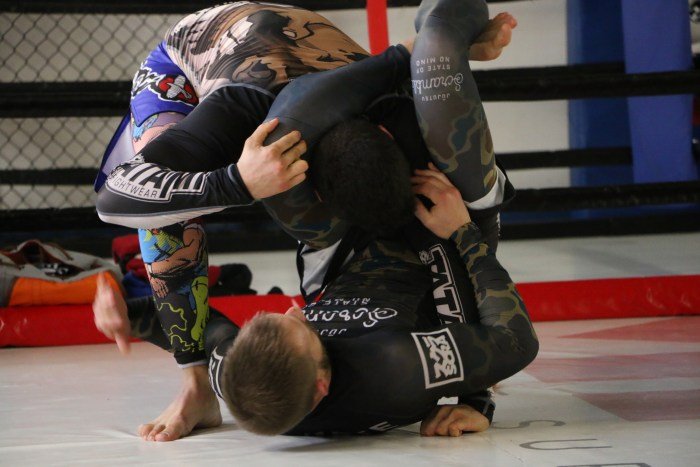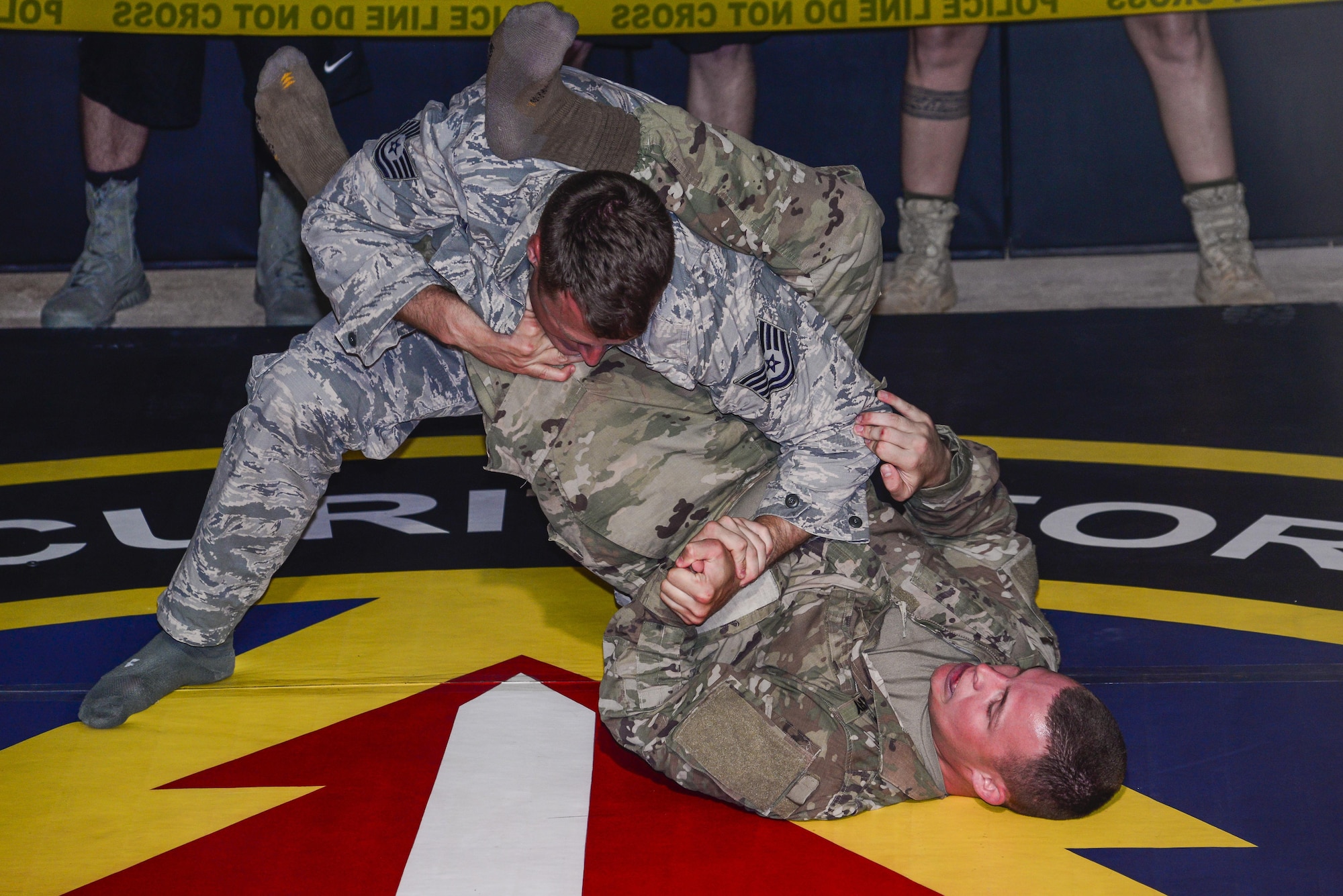In this article, you will discover effective techniques to enhance your defense against submission attempts. Whether you’re a seasoned practitioner or just starting out, understanding how to effectively defend against submission holds is crucial for success in any combat sport. By implementing advanced defense strategies and mastering key techniques, you will be able to confidently navigate your way out of precarious situations and ultimately emerge victorious. Elevate your skills, protect yourself, and stay one step ahead with these advanced defense methods.
Understanding Submission Attempts
Definition of submission attempts
Submission attempts refer to any actions or behaviors aimed at overpowering or dominating another individual without their consent. These attempts can take various forms, including physical, emotional, or psychological tactics. The goal of submission attempts is to gain control and power over someone else, disregarding their autonomy and personal boundaries.
Types of submission attempts
Submission attempts can manifest in different ways, and it is crucial to recognize and understand these tactics to effectively defend against them. Some common types of submission attempts include physical aggression, emotional manipulation, gaslighting, intimidation, and coercion. Each of these tactics is designed to exploit vulnerabilities and weaken an individual’s resistance, making it important to be aware of these strategies in order to protect oneself.
Importance of Advanced Defense
Preventing physical harm
One of the primary reasons for developing advanced defense skills is to prevent physical harm. When faced with a submission attempt, being able to effectively defend oneself can be crucial in avoiding injuries and ensuring personal safety. By learning advanced defense techniques, you can empower yourself to resist physical aggression and increase your chances of escaping from dangerous situations unharmed.
Maintaining control and autonomy
Advanced defense techniques also play a vital role in maintaining control and autonomy over your own body and choices. Through physical self-defense and verbal de-escalation strategies, you can assert boundaries and assertively communicate your refusal to be controlled or dominated. This not only protects your physical well-being but also preserves your sense of self and independence.
Preserving personal boundaries
Another important aspect of advanced defense is the preservation of personal boundaries. Submission attempts often involve intrusions into personal space, emotional manipulation, and pressure to engage in unwanted actions or behaviors. By developing awareness, setting clear boundaries, and effectively asserting them, you can safeguard your personal boundaries and prevent others from exerting undue influence or control over you.
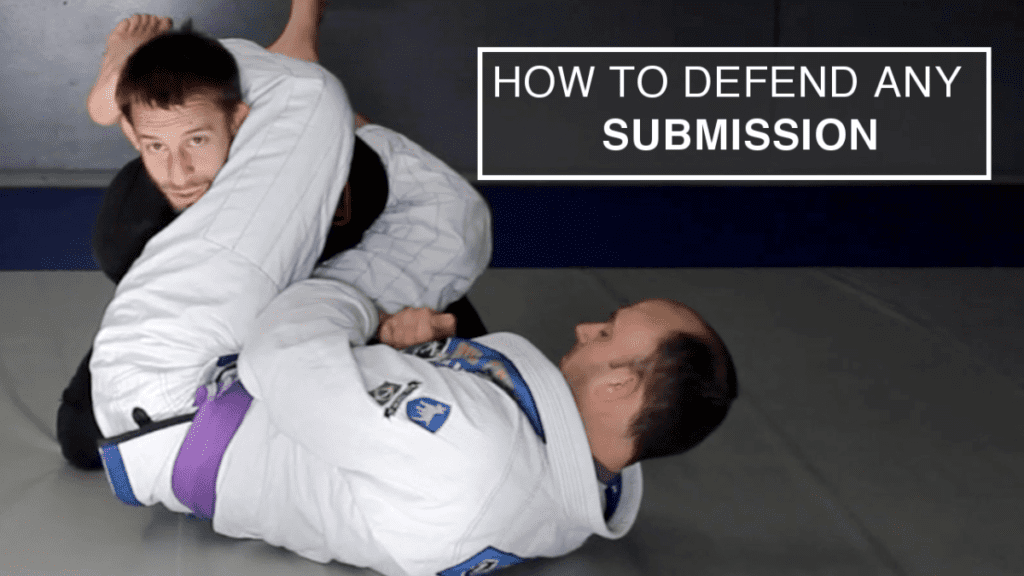
Developing Awareness
Recognizing warning signs
To effectively defend against submission attempts, it is crucial to develop awareness of the warning signs. These signs can include aggressive body language, verbal intimidation, manipulation tactics, and attempts to isolate or control. By being attuned to these warning signs, you can identify potential threats and take proactive measures to protect yourself.
Understanding psychological manipulation
Psychological manipulation is a common strategy used in submission attempts. It involves tactics such as gaslighting, manipulation of emotions, guilt-tripping, and manipulation of perceptions to gain control over someone else. Understanding these manipulative techniques can help you recognize when they are being employed and not fall victim to them.
Identifying common tactics
Submission attempts often follow common patterns and employ specific tactics. By familiarizing yourself with these tactics, such as love bombing, shaming, or threats, you can better anticipate and respond to them. Knowledge of these tactics enables you to maintain awareness and take appropriate actions to defend yourself against submission attempts.
Physical Self-Defense Techniques
Basic blocking and striking techniques
Learning basic blocking and striking techniques can be a crucial aspect of advanced defense. These techniques involve using physical actions to protect yourself, such as blocking punches or kicks and delivering strikes to vulnerable areas of an attacker’s body. By mastering these techniques, you can effectively neutralize physical aggression and create an opportunity for escape.
Escape maneuvers and techniques
Being able to execute escape maneuvers and techniques is essential in evading submission attempts. These techniques involve finding ways to quickly disengage from an attacker and create distance. Skills such as wrist escapes, joint locks, and positioning can provide valuable tools for escaping from physical holds and restraints.
Utilizing leverage and pressure points
An understanding of leverage and pressure points can greatly enhance your physical self-defense capabilities. Leveraging an attacker’s strength against them can help you gain the upper hand and break free from their control. Identifying and targeting pressure points, such as nerve clusters or vulnerable joints, can also be effective in debilitating an attacker and creating an opportunity to escape.
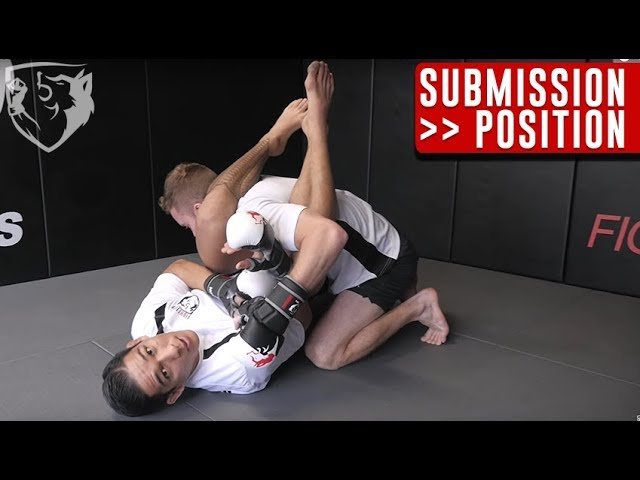
Verbal De-escalation Strategies
Maintaining calm and composure
When faced with a submission attempt, maintaining a calm and composed demeanor can significantly impact the outcome. Keeping your emotions in check allows you to think more clearly, make rational decisions, and assertively communicate your boundaries. By staying calm, you can also de-escalate the situation and potentially discourage further aggression or manipulation.
Active listening and empathy
Active listening and displaying empathy can be powerful de-escalation strategies. By calmly and attentively listening to the person attempting to submit you, you can defuse tension and potentially establish a cooperative dialogue. Demonstrating empathy and acknowledging their perspective, without conceding your own boundaries, can help create a more open and non-confrontational environment.
Assertive communication
Assertive communication is a vital skill to master when confronted with submission attempts. It involves clearly expressing your boundaries, needs, and refusal to be controlled or manipulated, while maintaining respect for the other person. By using firm but respectful language, you can assert your autonomy and effectively communicate your unwillingness to submit.
Mindset and Mental Preparation
Building confidence and self-esteem
Building confidence and self-esteem is essential for effective defense against submission attempts. Developing a strong sense of self-worth and belief in your abilities can help you stand up against aggression and manipulation. By recognizing your own value and inherent right to personal autonomy, you can bolster your mental resilience and better defend yourself.
Setting clear boundaries
Establishing and consistently enforcing clear boundaries is a crucial aspect of mental preparation. Clearly defining what is acceptable and what is not allows you to communicate your boundaries confidently. By identifying and articulating your personal limits, you send a clear message that attempts to overcome those boundaries will not be tolerated.
Visualizing and rehearsing responses
Visualizing and rehearsing responses to submission attempts can strengthen your mental readiness. By mentally preparing for potential scenarios, you can preemptively strategize and envision effective defense techniques. This visualization and rehearsal help build muscle memory and increase your level of preparedness, enabling you to respond quickly and decisively if faced with a real-life threat.
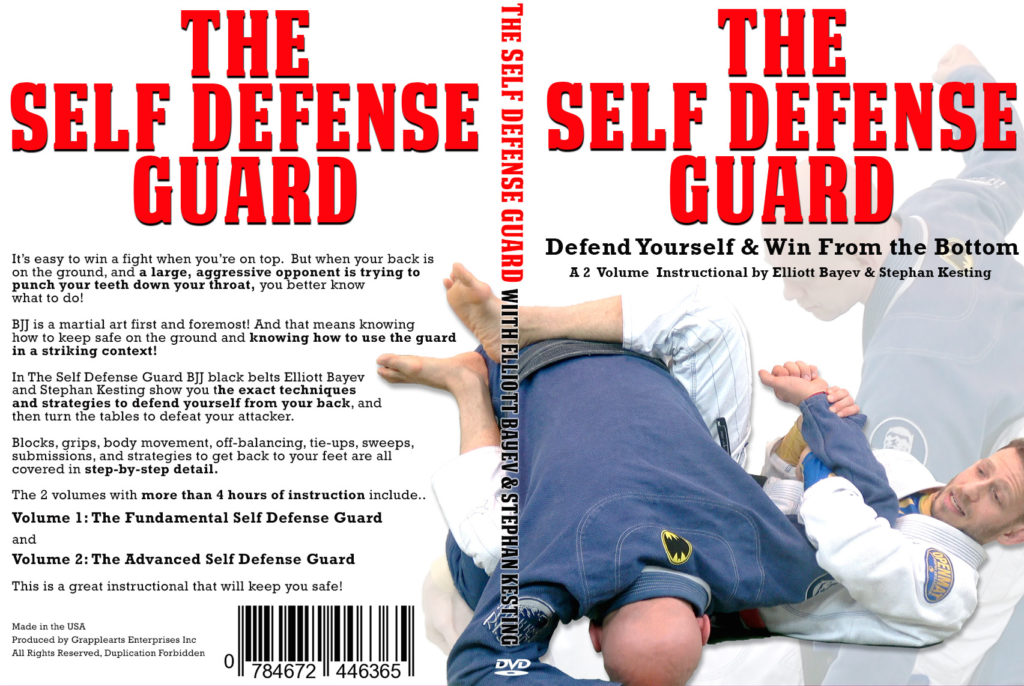
Building Physical Strength and Fitness
Engaging in regular exercise
Regular exercise plays a crucial role in building physical strength and fitness, both of which contribute to advanced defense. Engaging in activities such as weightlifting, cardiovascular exercise, and martial arts training can improve your overall strength, stamina, and agility. These physical attributes are vital when it comes to defending oneself against submission attempts.
Strength and conditioning training
Strength and conditioning training specifically focuses on developing the muscle groups needed for physical self-defense. Exercises like push-ups, squats, and core workouts can build muscular strength and improve overall fitness. Incorporating resistance training, plyometrics, and endurance workouts into your routine can further enhance your physical capabilities and increase your chances of successfully defending against submission attempts.
Enhancing flexibility and agility
Flexibility and agility are essential components of advanced defense. Exercises such as yoga, Pilates, and dynamic stretching can improve your flexibility, allowing you to move more freely and efficiently. Additionally, incorporating agility drills and quick footwork exercises can enhance your ability to evade and counter submission attempts effectively.
Seeking Professional Training and Guidance
Taking self-defense classes
Enrolling in self-defense classes conducted by qualified instructors can provide invaluable training and guidance. These classes often teach a combination of physical defense techniques, mental preparation strategies, and situational awareness. Learning from professionals who specialize in self-defense equips you with the knowledge and skills necessary to effectively defend against submission attempts.
Working with a personal trainer
Working with a personal trainer can help you develop the physical strength and agility needed for advanced defense. A personal trainer can design a customized fitness program that targets your specific needs and goals, helping you build strength, increase endurance, and improve overall physical fitness. Their expertise and guidance can greatly enhance your capabilities in defending against submission attempts.
Consulting with a therapist or counselor
Seeking guidance from a therapist or counselor can be particularly beneficial when dealing with the psychological aspects of submission attempts. A professional trained in trauma or abuse can assist you in processing any emotional or psychological effects of these experiences and provide strategies for developing resilience and coping mechanisms. Their support can help you navigate the aftermath of submission attempts and regain a sense of personal empowerment.
Utilizing Technology and Personal Safety Apps
Using smartphone applications for personal safety
Advancements in technology have provided various smartphone applications designed for personal safety. These apps often include features such as emergency alerts, GPS tracking, and panic buttons that can be activated in threatening situations. Utilizing these apps can provide an additional layer of protection and assistance, particularly when faced with unexpected submission attempts or unsafe environments.
Installing surveillance cameras and alarms
Installing surveillance cameras and alarms in your home or workplace can act as a deterrent and also provide evidence in case of submission attempts. These security measures increase the chances of early detection and minimize the potential for successful submission attempts. By utilizing technology tools like cameras and alarms, you create a safer environment for yourself and discourage potential aggressors.
Choosing self-defense devices
Self-defense devices, such as pepper spray, personal alarms, or tasers, can provide an added level of protection. These tools offer the ability to incapacitate or disorient an attacker, providing valuable time to escape and seek help. When choosing self-defense devices, it is important to research local laws and regulations, receive proper training, and understand how to responsibly and effectively use them.
Creating a Support Network
Sharing experiences and knowledge with peers
Building a support network of peers who have experienced or understand submission attempts can be empowering. Sharing experiences, concerns, and strategies for self-defense can provide validation and practical advice. Peer support offers a safe space for discussing personal challenges and learning from others’ experiences, fostering strength and resilience in the face of submission attempts.
Forming self-defense groups or clubs
Forming self-defense groups or clubs with like-minded individuals can be an effective way to train and practice defense techniques in a supportive environment. These groups can provide a sense of community and camaraderie, as well as an opportunity to learn from each other and develop advanced defense skills together. Working collaboratively strengthens the collective ability to resist and overcome submission attempts.
Seeking support from friends and family
Lean on your existing support system, including friends and family, when dealing with submission attempts. Trusted loved ones can provide emotional support, guidance, and assistance when faced with challenging situations. Sharing your experiences and concerns with those you trust can help alleviate anxiety and provide practical advice or resources to address submission attempts effectively.
In conclusion, understanding submission attempts and developing advanced defense skills is essential for personal safety, maintaining autonomy, and preserving personal boundaries. By recognizing warning signs, utilizing physical self-defense techniques, implementing de-escalation strategies, and building physical strength and mental resilience, you can effectively defend against submission attempts. Seeking professional training, utilizing technology, and creating a supportive network further enhances your ability to protect yourself. Remember, your safety and well-being are of utmost importance, and by equipping yourself with the necessary tools and knowledge, you can confidently navigate and overcome submission attempts.
